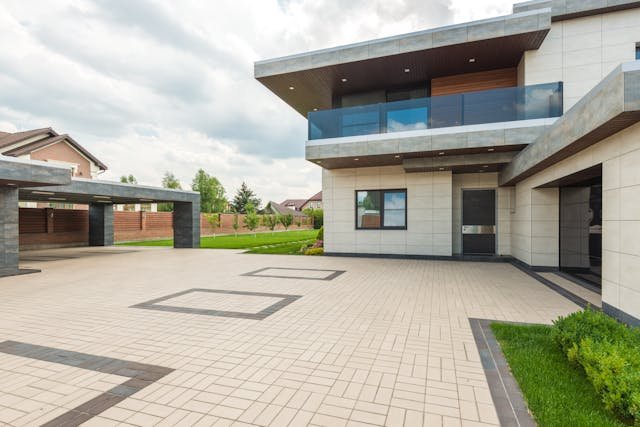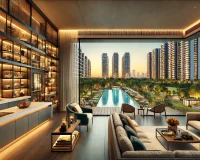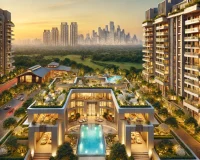Modern architecture has revolutionized the way we perceive and inhabit spaces. Known for its sleek lines, minimalism, and innovative use of materials, the essence of modern architecture lies in its ability to harmonize aesthetics with functionality. This evolution has significantly impacted luxury housing projects, particularly in urban landscapes like Gurgaon, where the demand for luxury flats and apartments reflects both global design trends and local preferences. This blog delves into the core elements of modern architecture, its key principles, innovations, and how it shapes luxury real estate globally.
The Core Principles of Modern Architecture
Modern architecture, often synonymous with clean, simplistic design, embraces a “form follows function” philosophy. This means that every architectural element serves a purpose, without unnecessary embellishments. Let’s explore the foundational principles that define the essence of modern architecture:
1. Minimalism and Simplicity
At the heart of modern architecture is minimalism. Buildings and apartments designed with this principle avoid excessive ornamentation. Instead, the focus is on simple forms and open spaces. This minimalist approach to design can be seen in the creation of luxury flats in Gurgaon, where spacious, open-plan living areas are complemented by clean lines and a reduction of clutter.
2. Use of Modern Materials
The essence of modern architecture also lies in its innovative use of materials. Glass, steel, and concrete are the dominant materials in modern structures. The transparency of glass, strength of steel, and versatility of concrete allow architects to create stunning designs that were once unimaginable. This trend is particularly evident in luxury real estate, where modern materials are combined to create impressive, durable buildings.
3. Integration with Nature
Modern architecture emphasizes the connection between indoor and outdoor spaces. Large windows, open terraces, and green areas within buildings create a seamless blend with nature. For residents of luxury flats in Gurgaon, this connection to nature enhances their living experience, offering an oasis of calm in the urban environment.
4. Sustainability
Sustainability is another key element of the essence of modern architecture. Energy-efficient designs, eco-friendly materials, and innovative technologies like solar panels and rainwater harvesting systems are being integrated into luxury homes and apartments. This has become a growing trend in luxury housing projects worldwide, where eco-conscious buyers are increasingly seeking homes that reduce their carbon footprint.
5. Functionality and Versatility
In modern architecture, every space is designed to serve multiple functions. From open kitchens to multi-purpose living areas, the focus is on flexibility. This is particularly important in luxury real estate, where homeowners seek spaces that adapt to their changing needs.

Innovations Shaping Modern Architecture
The field of architecture is constantly evolving, driven by technological advancements and changing lifestyles. Here are some of the most significant innovations influencing the essence of modern architecture:
1. Smart Homes
One of the biggest innovations in modern architecture is the rise of smart homes. Today, luxury flats and apartments come equipped with home automation systems that allow residents to control lighting, security, and even temperature from their smartphones. These advancements are not just for convenience but also contribute to energy efficiency, aligning with the sustainability aspect of modern architecture.
2. Modular Construction
Modular construction, which involves creating sections of a building off-site and assembling them on-site, is revolutionizing the way homes are built. This method allows for faster construction and reduces waste, making it an ideal choice for large-scale luxury housing projects. In cities like Gurgaon, where space is at a premium, modular construction offers a solution for developing luxury apartments efficiently.
3. Biophilic Design
As modern architecture continues to evolve, biophilic design—integrating natural elements into buildings—is gaining popularity. Features like living walls, rooftop gardens, and indoor water elements are increasingly seen in luxury real estate developments. In luxury flats in Gurgaon, biophilic design provides residents with a sense of tranquility and wellness, creating a healthy, aesthetically pleasing environment.
4. Adaptive Reuse
Modern architecture also focuses on the adaptive reuse of buildings, which involves repurposing existing structures for new uses. This practice not only preserves historical architecture but also reduces the environmental impact of construction. In the luxury sector, many luxury real estate projects have embraced this approach, converting old industrial buildings into high-end apartments and residential complexes.
Global Trends in Modern Architecture
The essence of modern architecture is not limited to a single region. It’s a global movement that has adapted to the local cultures, climates, and lifestyles of cities across the world. Here are some of the global trends that are shaping modern architecture today:
1. Sustainable Urban Development
In many global cities, the focus is on sustainable urban development. Architects are designing buildings that not only reduce energy consumption but also enhance the quality of life for residents. This is particularly relevant in cities like Gurgaon, where luxury housing projects are designed to offer environmentally friendly solutions while providing all the modern amenities.
2. Mixed-Use Developments
The rise of mixed-use developments, where residential, commercial, and retail spaces coexist in a single building or area, is another major trend. These developments offer convenience and promote a sense of community. Luxury real estate projects, especially apartments in Gurgaon, are increasingly incorporating this concept, allowing residents to live, work, and play in the same vicinity.
3. Globalization of Design
Thanks to globalization, architectural designs from one part of the world are influencing projects in other regions. The essence of modern architecture is being redefined by this cross-pollination of ideas, leading to unique hybrid designs that combine international trends with local preferences. For instance, many luxury flats in Gurgaon reflect a blend of global design principles with traditional Indian elements.
4. Technology-Driven Architecture
The incorporation of advanced technologies, such as 3D printing, virtual reality, and artificial intelligence, is pushing the boundaries of modern architecture. These technologies allow architects to visualize complex designs, optimize building efficiency, and even predict how a building will age over time. In the context of luxury housing projects, these innovations ensure that residents enjoy state-of-the-art facilities that enhance their living experience.
Conclusion
The essence of modern architecture is a reflection of society’s evolving needs, values, and aspirations. By combining minimalism, sustainability, functionality, and innovation, modern architecture has created spaces that not only look stunning but also enhance the quality of life for their inhabitants. In rapidly growing urban centers like Gurgaon, this architectural style is leaving its mark on luxury real estate, from luxury flats to high-end apartments. As we continue to explore and innovate, the future of modern architecture looks more exciting than ever, promising to shape the way we live, work, and connect with the world around us.




